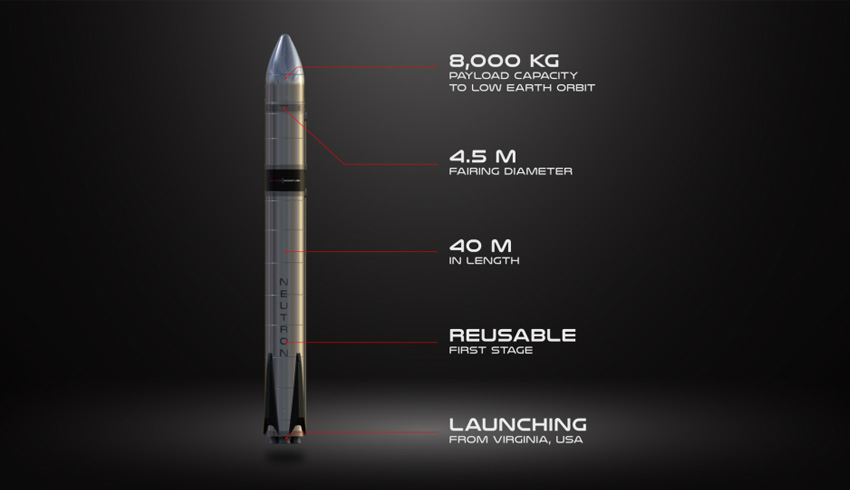Rocket Lab has unveiled plans to develop ‘Neutron’ — an eight-tonne payload-class launch vehicle designed for satellite mega-constellation deployment, deep space missions, and human spaceflight.
The reusable rocket is expected to build on the company’s Electron launch vehicle, which supports access to orbit for small satellites of up to 300 kilograms, and to provide a high-flight-rate dedicated launch solution for larger commercial and government payloads.
“Rocket Lab solved small launch with Electron. Now we’re unlocking a new category with Neutron,” Peter Beck, Rocket Lab founder and CEO, said.
“We’ve listened to our customers and the message is clear — biggest doesn’t always mean best when it comes to constellation deployment.
“Efficiently building the mega constellations of the future requires launching multiple satellites in batches to different orbital planes. It’s a requirement that all too often sees large launch vehicles fly with payloads well below their full lift capacity, which is an incredibly expensive and inefficient way to build out a satellite constellation.”
According to Beck, Neutron’s eight-tonne lift capacity would make it “ideally sized” to deploy satellites in batches to specific orbital planes, creating a “more targeted and streamlined” approach to building out mega constellations.
The new launch vehicle is also expected to provide a dedicated service to orbit for larger civil, defence and commercial payloads, which require a level of schedule control and high-flight cadence, currently unavailable on large and heavy lift rockets.
Rocket Lab has claimed that Neutron would be capable of lifting 98 per cent of all satellites forecast to launch through 2029 and would be capable of introducing highly disruptive lower costs by leveraging Electron’s heritage, launch sites and architecture.
The medium-lift Neutron rocket is set to be designed as a two-stage launch vehicle, 40 metres in height and 4.5 metres in diameter, with a lift capacity of up to eight tonnes to low-Earth orbit, two tonnes to the moon, and one and half a tonne to Mars and Venus.
Neutron is also expected to feature a reusable first stage designed to land on an ocean platform, enabling a high launch cadence and decreased launch costs for customers.
While initially designed for satellite payloads, the rocket is expected to be capable of International Space Station (ISS) resupply and human spaceflight missions.
Launches of the Neutron rocket are set to take place from Virginia’s Mid-Atlantic Regional Spaceport located at the NASA Wallops Flight Facility, which, according to the firm, would eliminate the need to build a new pad, accelerating the timeline to first launch, expected in 2024.

Charbel Kadib
News Editor – Defence and Cyber, Momentum Media
Prior to joining the defence and aerospace team in 2020, Charbel was news editor of The Adviser and Mortgage Business, where he covered developments in the banking and financial services sector for three years. Charbel has a keen interest in geopolitics and international relations, graduating from the University of Notre Dame with a double major in politics and journalism. Charbel has also completed internships with The Australian Department of Communications and the Arts and public relations agency Fifty Acres.

